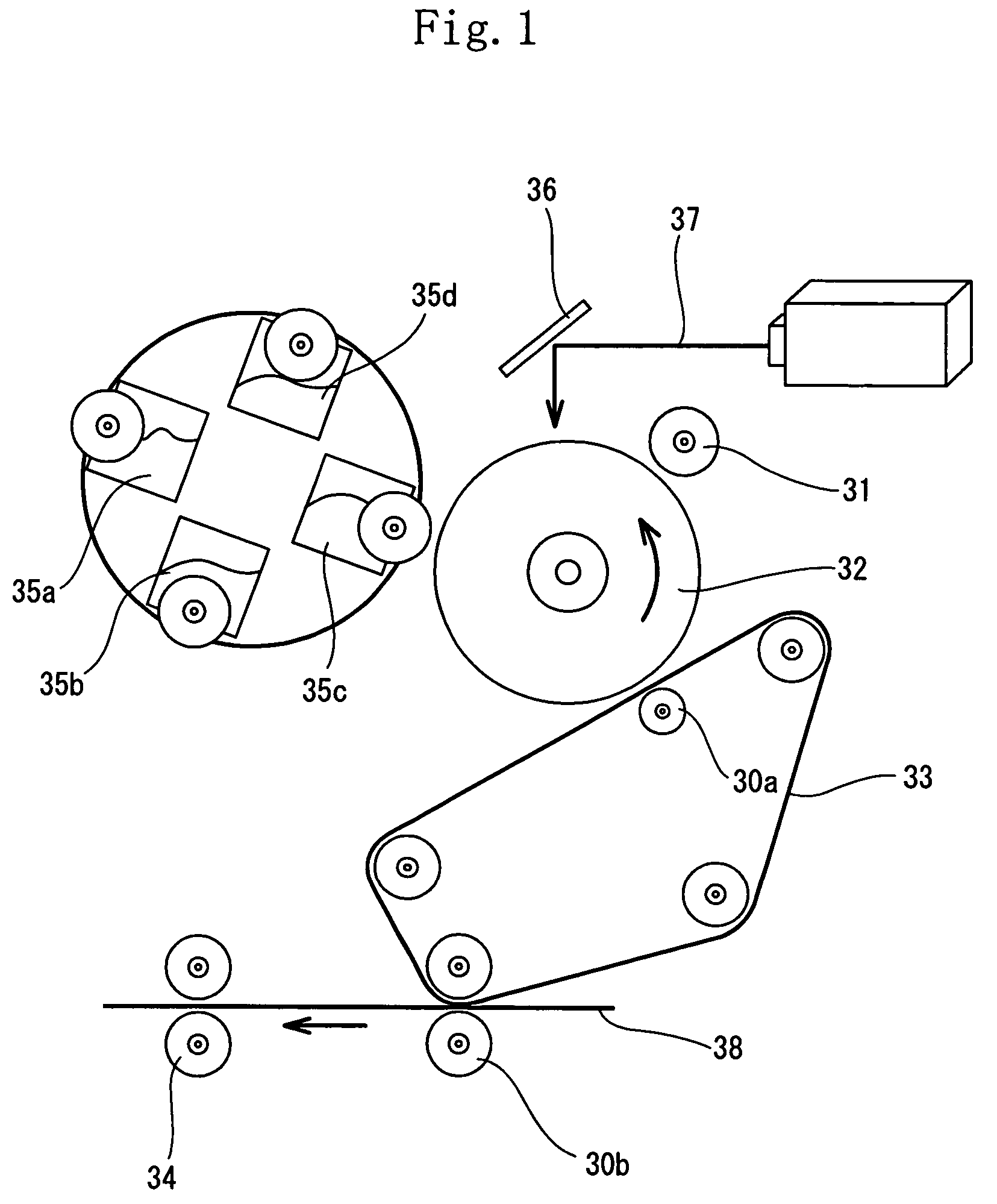Flame-retardant seamless belt, method of manufacturing flame-retardant seamless belt, and image-forming apparatus having flame-retardant seamless belt
a technology of flame-retardant and seamless belts, which is applied in the direction of manufacturing tools, applications, instruments, etc., can solve the problems of toxic gases such as dioxin generation, staining a photosensitive member, and restricted use state of flame-retardant belts, so as to improve the dispersibility of flame-retardant additives such as melamine cyanurate, reduce the residual strain, and improve the dispersibility
- Summary
- Abstract
- Description
- Claims
- Application Information
AI Technical Summary
Benefits of technology
Problems solved by technology
Method used
Image
Examples
example 1
[0076]10 wt % of lithium-bis (trifluoromethanesulfonyl) imide which is the anion-containing salt shown by the chemical formula 1 was dry-blended with a polyester thermoplastic elastomer (“Pelprene P90BD” produced by Toyobo Co., Ltd.: polyester polyether). The mixture was supplied to a hopper of a biaxial extruder to knead it at 210° C. Thereby a conductive master batch was obtained. The temperature of the resin measured at this time was 230° C.
[0077]50 wt % of melamine cyanurate (“MC640” produced by Nissan Chemical Industries, Ltd.) was dry-blended with the “Pelprene P90BD”. The mixture was supplied to the hopper of the biaxial extruder to knead it at 210° C. Thereby a flame-retardant master batch was obtained. The temperature of the resin measured at this time was 230° C.
[0078]A pellet of each of the “Pelprene P90BD”, the conductive master batch, and the flame-retardant master batch were dry-blended in such a way that the weight ratio of the lithium-bis (trifluoromethanesulfonyl) i...
example 2
[0095]A conductive master batch and a flame-retardant master batch were prepared in a manner similar to that of the example 1. Except that weight ratio of the lithium-bis (trifluoromethanesulfonyl) imide was 2.5 parts by weight for 100 parts by weight of the “Pelprene P90BD”, the components were kneaded in conditions similar to that of the example 1 to obtain a flame-retardant seamless belt. The flame-retardant seamless belt had an inner diameter, an average thickness, and a width equal to those of the flame-retardant seamless belt of the example 1.[0096]Volume resistivity: 107.2(Ω·cm)[0097]In-plane variation: 0.4[0098]Degree of dependence on environment: 2.4[0099]Surface roughness: Rz=1.1 μm[0100]Printing: favorable[0101]Fire retardance: ◯
example 3
[0102]Water-soluble urethane resin (“Bayerhijoule TPLS2186” produced by Sumitomo Bayer Urethane Corporation) was diluted with water. A leveling agent was added to the solution to form a paint-like material. The paint-like material was electrostatically deposited to form a coating layer on the peripheral surface of the belt of the example 1 by an electrostatic deposition apparatus. The thickness of the coating layer was 5 μm.[0103]Volume resistivity: 109.4(Ω·cm)[0104]In-plane variation: 0.4[0105]Degree of dependence on environment: 1.6[0106]Surface roughness: Rz=1.6 μm[0107]Printing: favorable
[0108]Owing to the effect of the formation of the coating layer, the toner transfer efficiency was improved in the printing test. Thus a small amount of toner was left in the toner transfer. The cleaning blade scraped residual toner at a high efficiency.[0109]Fire retardance: ◯
PUM
| Property | Measurement | Unit |
|---|---|---|
| volume resistivity | aaaaa | aaaaa |
| volume resistivity | aaaaa | aaaaa |
| humidity | aaaaa | aaaaa |
Abstract
Description
Claims
Application Information
 Login to View More
Login to View More - R&D
- Intellectual Property
- Life Sciences
- Materials
- Tech Scout
- Unparalleled Data Quality
- Higher Quality Content
- 60% Fewer Hallucinations
Browse by: Latest US Patents, China's latest patents, Technical Efficacy Thesaurus, Application Domain, Technology Topic, Popular Technical Reports.
© 2025 PatSnap. All rights reserved.Legal|Privacy policy|Modern Slavery Act Transparency Statement|Sitemap|About US| Contact US: help@patsnap.com



